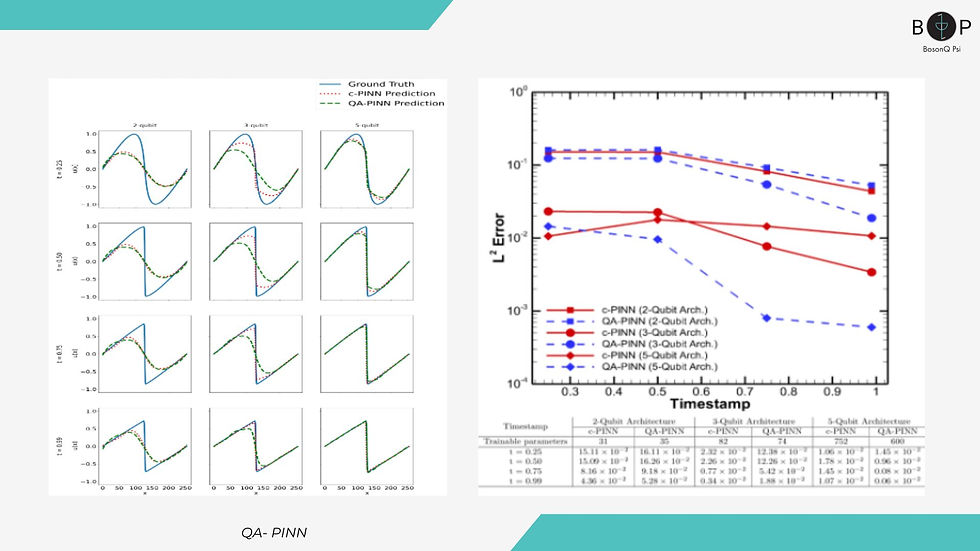
Combining Physics-based and Data-driven modelling in engineering:
In science and engineering applications, accurately describing and predicting natural and physical phenomena is crucial. However, the limitations of hardware used in simulations pose challenges. To overcome these bottlenecks, alternative technologies and approaches are needed.
One such technology is Computational Fluid Dynamics (CFD), which has greatly enhanced simulation capabilities and driven engineering innovations. With the emergence of digital twins, autonomous systems, and artificial intelligence, the demand for accurate, interpretable, computationally efficient, and generalizable models has grown.
Physics-based modeling (PBM) and data-driven modeling (DDM) are the two commonly used approaches, but they have limitations. A hybrid approach that combines their strengths can yield superior models. This is where Physics Informed Neural Networks (PINNs) come into play. PINNs leverage data-driven supervised neural networks while incorporating physics equations to ensure consistency with the known physics of the system.
PINNs offer higher accuracy and faster information processing, making them highly suitable for engineering problems, including CFD simulations. By utilizing PINNs, researchers and engineers can unlock new possibilities in accurately simulating and predicting complex physical systems, transforming computational physics and enabling transformative engineering solutions.
Challenges of CFD methods:
Need for a large quantity of high-quality training data: Traditional DNNs require a significant amount of training data to achieve good performance. However, obtaining such data can be challenging and costly in many scenarios.
Lack of theoretical analysis and reliability: Traditional DNNs are often regarded as black boxes due to their lack of theoretical analysis and lower bound of performance. This can create doubts about the reliability of results, especially in safety-critical applications.
Physically infeasible results: Without careful design and domain-specific knowledge, classical DNNs can produce physically infeasible results.
Lack of consistent out-of-sample performance: Traditional DNNs cannot provide a theoretical guarantee on the generalizability of their results, leading to inconsistent performance on unseen data.
Our CFD Approach:
Fluid mechanics, a challenging application of PDEs, often requires precise mesh generation, which can be simplified using auto differentiation in Physics Informed Neural Networks (PINNs) a mesh free approach.
New approaches based on quantum computing have emerged to address the limitations of classical PINNs.
Quantum-assisted PINNs (QA-PINNs), developed by BosonQ Psi, utilize a Continuous Variable quantum computing framework with a minimal alteration of classical PINN architecture. This approach efficiently solves forward problems of nonlinear and time-dependent PDEs, such as the 1D viscid Burger's equation, leading to faster and more accurate simulations. Additionally, the Hybrid-Quantum PINN (HQ-PINN) approach efficiently solves the 3D steady-state Navier-Stokes equation.
In summary, a range of CFD approaches, including classical PINNs and emerging quantum-assisted methodologies, empower engineers and scientists to model and simulate complex physical systems. This deepens our understanding and paves the way for optimized and safer engineering designs.
Benchmarking against Classical PINN - Why QA-PINN is Better for Complex CFD?
Advantages:
Improved prediction accuracy: QA-PINN methodology improves prediction accuracy for specific applications.
Improved training efficiency: QA-PINN reduces the search space of weights, leading to improved training efficiency and convergence performance.
Enhanced sampling efficiency: QA-PINN reduces the reliance on large amounts of training data, making it more efficient and effective in scenarios with limited or scarce data availability.
BosonQ Psi’s QA-PINN simulation platform:
BosonQ Psi (BQP) has developed a simulation software platform that utilizes Quantum-Assisted PINN (QA-PINN) to solve challenging Computational Fluid Dynamics (CFD) problems.
Offering an alternative to traditional mesh-based methods.
For the analysis, researchers from BQP have compared the performance of C-PINN and BQP's QA-PINN in solving 1D Burger's equation using architectures with 2, 3, and 5 qubits. This innovative approach can enhance the generalization capabilities and training efficiency of PINNs for industrial applications.

BQP’s algorithms have validated that QA-PINN has fewer trainable parameters and delivered exceptional accuracy, overcoming overfitting challenges and improving training performance. In comparison, C-PINN showed lower accuracy compared to the previous architecture for the last two-time steps, requiring further investigation.

Fig: Performance Comparison of 2-qubit, 3-qubit, and 5-qubit QA-PINN architectures with equivalent classical PINN; and ground truth analytical solution and Error based Comparative Analysis of Classical PINN and QA-PINN
Conclusion
In conclusion, this study successfully introduced the Quantum-Assisted PINN (QA-PINN) approach as a promising technique for reducing trainable parameters while maintaining accuracy and improving generalizability and training efficiency.
Future improvements can be expected with the development of more efficient Quantum Computers based on the current results such as the 5-qubit QA-PINN has reduced the trainable parameters improving computational efficiencies that outperforms its equivalent c-PINN on the error metric. It indicates the potential of a quantum hidden layer to replace a classical hidden layer within a deep neural network, reducing trainable parameters, and improving accuracy.
For scaling up the QA-PINN with more qubits, which will require GPU acceleration due to the increased training time. Additionally, benchmarking the QA-PINN against more complex PDEs in fluid mechanics, such as Navier-Stokes equations, can play vital roles in automotive and aerospace and defense sectors. It can also be applied to other deep learning architectures, including Convolutional Neural Networks and Transformers, for reducing trainable parameters.
Here are the key future benefits:
Efficiency: QA-PINN reduces trainable parameters, enhancing CFD simulation efficiency.
Accuracy: Improved accuracy across industries, leading to more reliable predictions and outcomes.
Cost-Effective: Offers cost-effective solutions without using extensive computational resources.
Generalization: Scalable and adaptable to various simulation problems in different industries.
Complex Problem Solving: Capable of handling complex Partial Differential Equations, opening doors for solving intricate problems.
Technological Advancements: Drives technological progress and pushes the boundaries of simulation innovation.


Comments